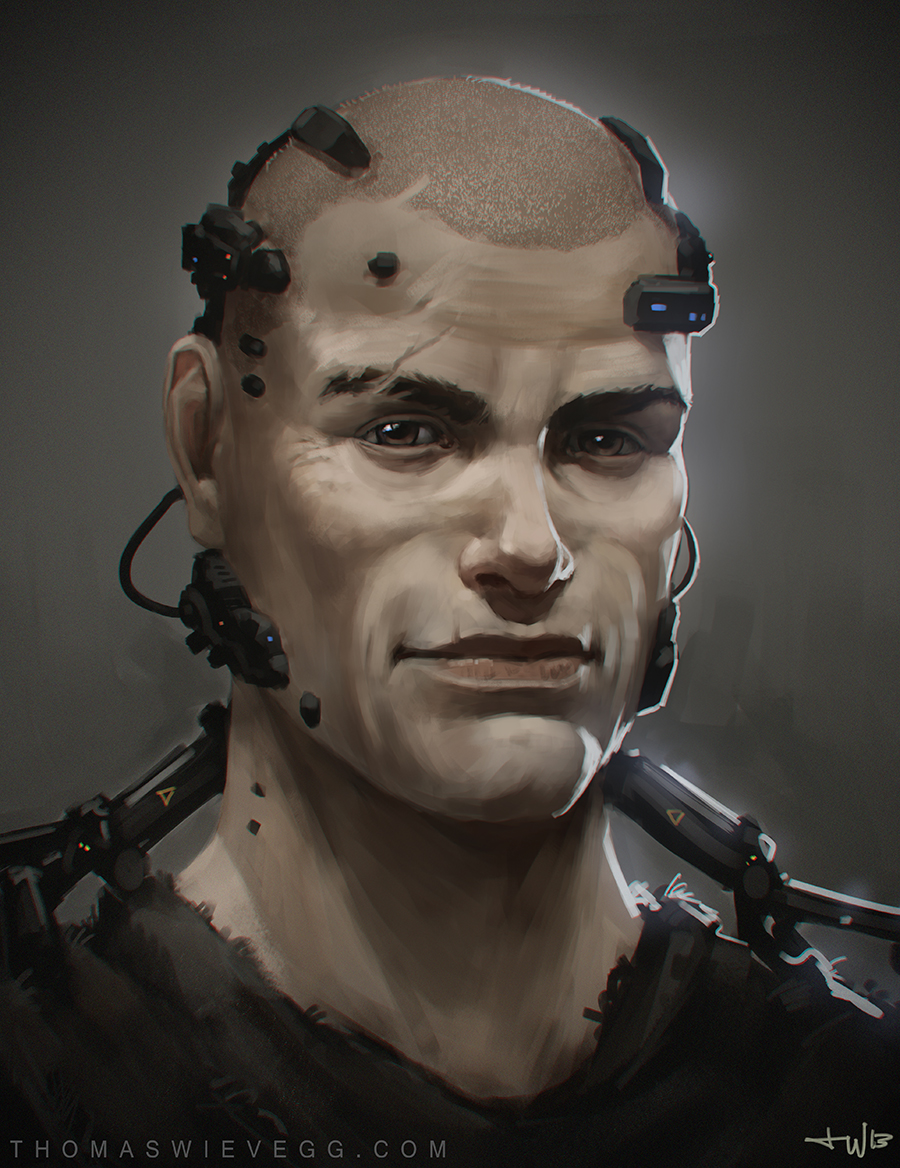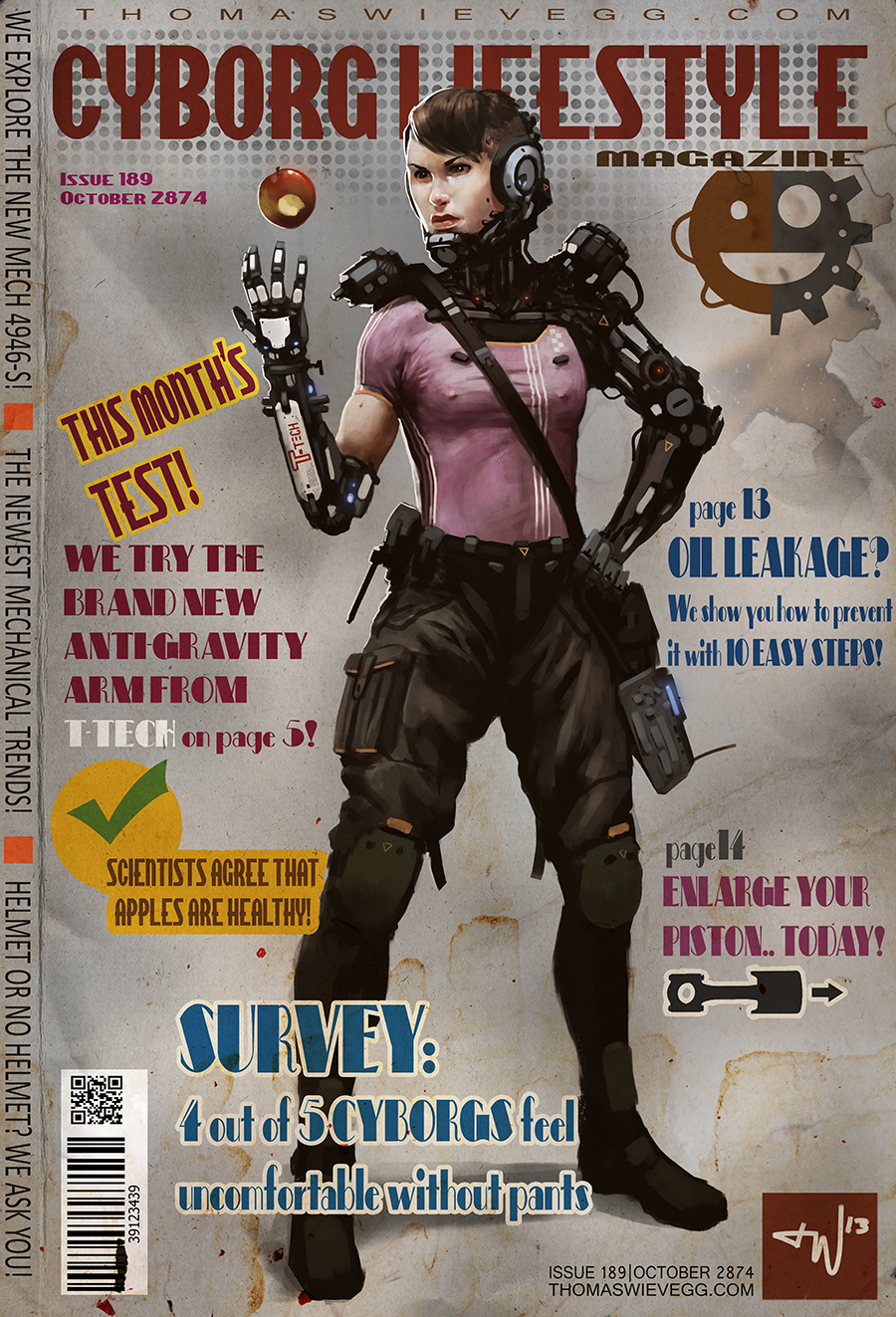Cyborgs / Augments
Transhuman Cyber-Symbiosis
Before even becoming Homo sapiens, humanoids have used tools. While it is documented that a few mammals and birds may use materials like sticks and grasses to do work for them, the extent to which humans have survived, thrived, and altered the environment using tools far surpasses any other life form on the planet. But at what point do the tools themselves alter human beings so that they are no longer human, or at least so that they become a new subspecies?
As the Twenty-first Century progressed, the usage of bio-mechanical machines increased. Artificial hearts and kidneys, lungs and limbs restored lost function at first. But as the machines became better, the people using them began to surpass the capabilities of normal human beings. A person with artificial limbs can go from being pitied to being envied when they can run faster, lift more, and endure longer. And there came a point when people were willingly replacing their natural, undamaged limbs and organs with machines.
Soon, more people integrated their technology with greater symbiosis. Phones and computers went from being handheld devices to being implanted in the ears and brains of their users. Optical sensors integrated with human sight to give people information they could not see with human eyes alone. Memories were supplemented with thought-integrated databases.
Yet as this integration between human and machine came closer, the people who used technology on an increasingly intimate scale were still, at the core, human. The term “Augment” became their preferred term for themselves, and they saw their use of technology as being no different than anyone wearing glasses or using ear-buds to listen to music.
But at what point did these humanoids branch off to become a separate subspecies of human? Some argue that the name Homo sapiens mechanica is not a true subspecies, but a state of mind. The argument used to be that these people do not grow technology; they must have them implanted or grafted on. But when it was proved that the fetuses of cyborg mothers inherited the nanotechnological robots from their mother’s blood and utilized them as their own, the argument that the biological process had taken a new turn gained credence. Now, advances in fetal technological integration can actually grow technology before a human is born, further blurring the lines between the subspecies. And recent studies in comparative genetics have demonstrated that gene-altering nanobots manufacture RNA to be more compatible with artificial technology to the point that the genomes and telomers are, in fact, different.
Be More Than You Can Be
Militaries around the world embraced cyborgs. When the “Be More Than You Can Be” advertisement for the United States Army promised the latest technological implants as well as a lifetime of maintenance, recruitment numbers reached their highest rate since it became all-voluntary. And those that reenlisted were given upgrades instead of monetary bonuses. Integrated units increased mission completion and survivability rates. Costs decreased because the cyborgs were able to perform better with existing weaponry. When the Singularity emerged, non-cyborg leaders and lawmakers questioned whether the Augments would sympathize. But Augments, used to asserting their humanity to the growing suspicions, not only lead the charge, they became among the strongest anti-Singularity voices. Cyborgs continue a very strong military tradition, and along with that, maintain strong patriotism for whichever national, urban, or corporate militaries they serve.Additional Information
Geographic Origin and Distribution
2.7068 billion (27.7%) of the world's population is Cybernetic Augmented:
- Asia: 1073.3 million (25.3% of Asian population)
- Africa: 954.9 million (26.0% of African population)
- Europe: 202.7 million (30.7% of European population)
- Latin & South America: 231.0 million (34.6% of Latin American population)
- North America: 229.2 million (49.6% of North American population)
- Oceania: 15.8 million (24.4% of Oceanian population) [includes independent ocean colonies]
Civilization and Culture
Culture and Cultural Heritage
While the fundamental techno-biology and DNA mechanisms are the same for all H. s. mechanica, how individuals came to be that way vary. Within the H.s.m. community, there are two general types, often interchangeable by non-subspecies, but distinct with the culture: Cyborgs and Augments. The following are character references to each.
Augments
I'm not just friendly to technology. I'm married to it!You are totally connected to all the media. Your health care is cutting-edge. You insist you are human, but with really cool toys. They say it altered your DNA when your mom took nanites for her health and yours, but you don't feel inhuman.
Cyborgs
No, I don't miss my legs. I did that on purpose!Maybe it was an accident or a war. Maybe you did it on purpose. But you can see, run, lift, hear, and think better. And you can see, run, lift, hear, and think better. Think better. Think *bzzt*. Maybe it's time for another upgrade.
Genetic Descendants
Scientific Name
Homo sapiens mechanica
Various Terms for H.sapiens mechanica
- Mech
- Metals
- Tinkers
- Screwtops
- Lugnuts
- (Tin) Cans







Comments